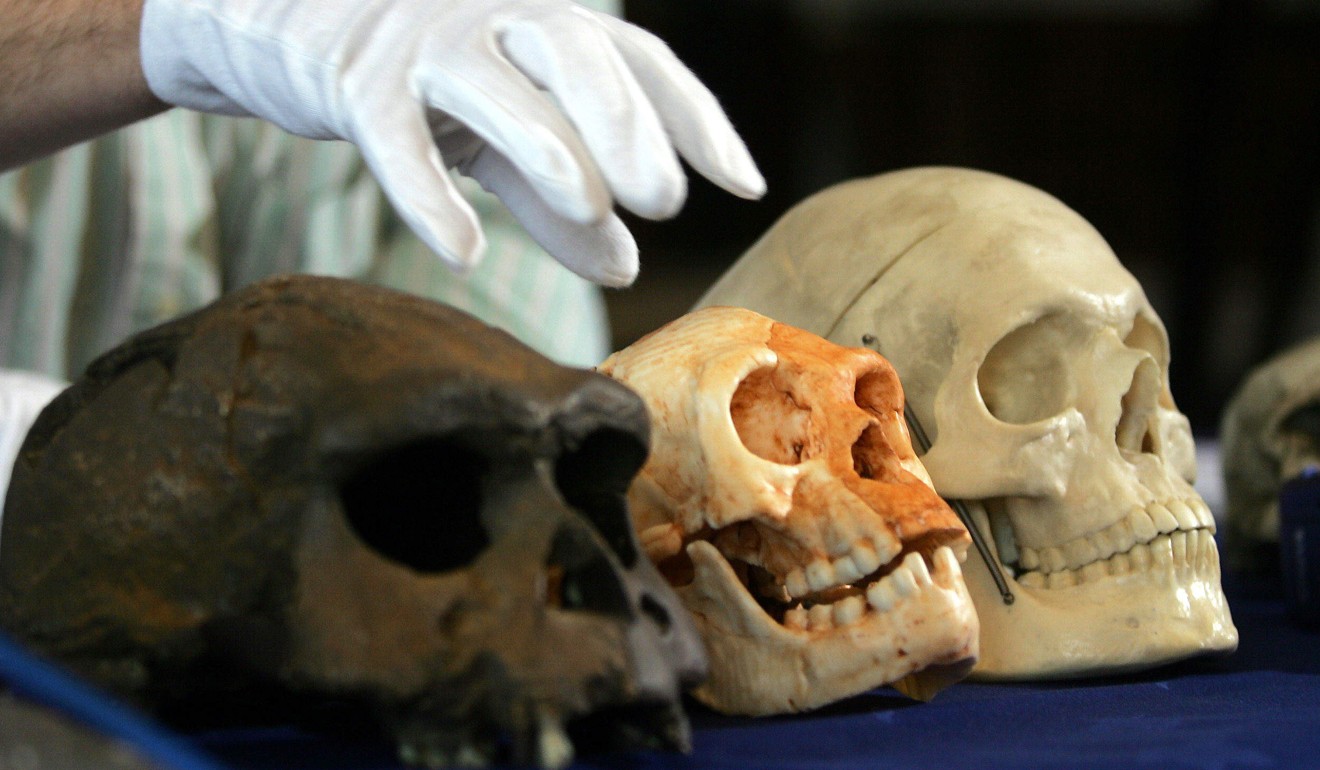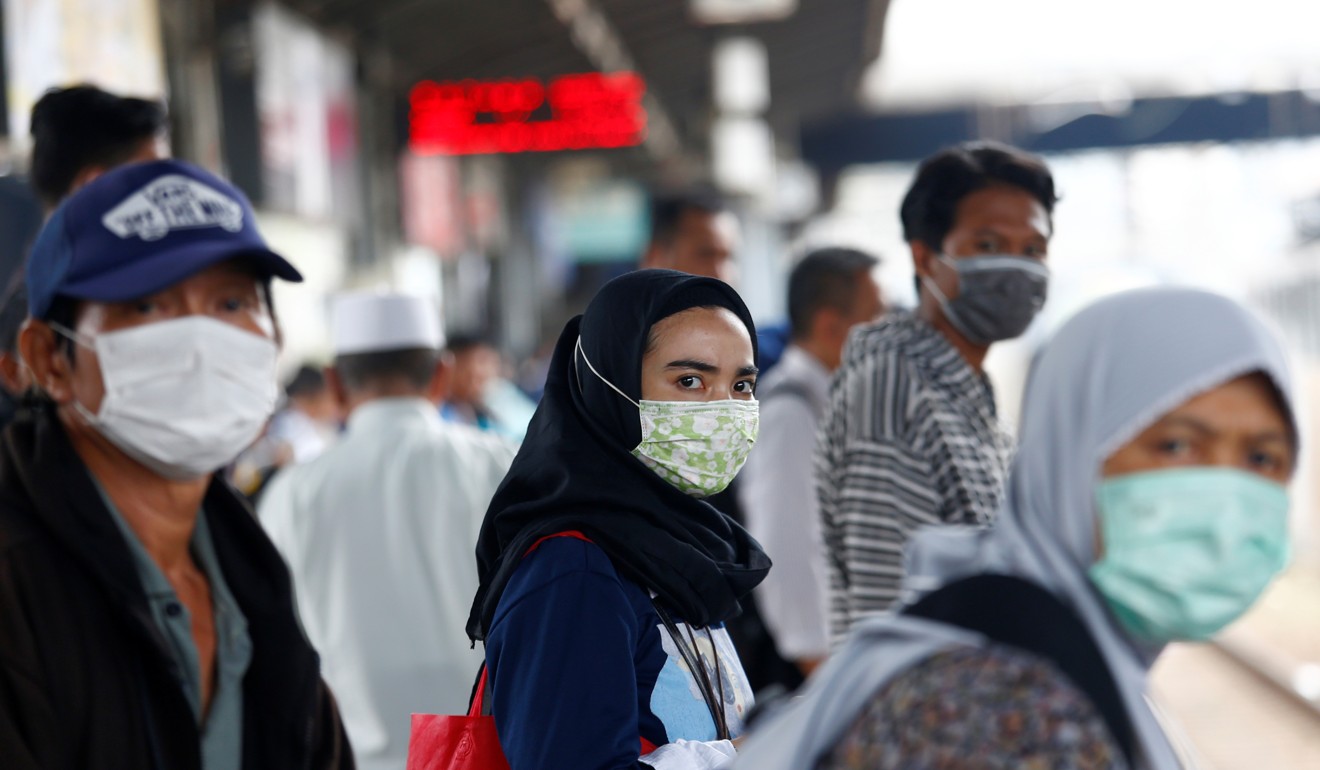
Coronavirus: Covid-19 could live on in Indonesia long after world recovers
- The country’s remote, isolated islands offer a perfect spot for the disease to hide and fester if the Jokowi government fails to act swiftly enough
- It needs to reach out to the regions now, and test, test, test
When the bones of a hitherto-unknown relative of modern man were found on the Indonesian island of Flores in 2003, the discovery shocked the scientific world into rethinking some of its most basic assumptions about our evolution.
What surprised scientists about this one-metre-tall pygmy human (homo floresiensis or “the little lady of Flores”) was not only that she had existed so recently – 50,000 years is the blink of an eyelid in evolutionary terms – but also that clues to her existence had evaded us for so long.

Perhaps it should not have been surprising. Indonesia’s 2 million square kilometres comprise 18,000 or so islands, providing ample hiding space for even the shyest of hominids – and much else besides. Countless species of undescribed birds, animals and plants live in these remote worlds, as do uncontacted and minimally contacted human tribes.
Coronavirus: poor Indonesian families most at risk of sudden spike in infections
Unfortunately, the same remoteness and isolation of these islands that give us such cause for wonder is also what makes Indonesia so uniquely vulnerable to the ravages of the coronavirus.
The country is faced, essentially, with a ticking time bomb. If it fails to get a grip on the crisis soon, the virus will spread to more remote islands where it will be able to fester, undiscovered and untreated for years to come. Much as Lucy managed to evade our detection for all those years, the coronavirus could live on in Indonesia long after it has disappeared from the rest of the world.

AN UNKNOWN OPPONENT
For weeks after the first cases of the coronavirus were discovered in Wuhan, China, some Indonesians appeared under the impression they would be spared its ravages. So much so than when a Harvard study suggested in February there might be undetected cases given the country’s strong travel links with China, it was denounced as “insulting” by none other than the country’s health minister Terawan Agus Putranto. The clean sheet, said the minister, was “all because of prayers”.
Now reality is setting in. The country has reported 450 cases and 38 deaths, most of them in Jakarta, though provinces including West Java, East Java and the Riau Islands have also reported infections. Given the government’s track record, however, it’s easy to believe the reality on the ground may be worse than it’s letting on.
A big part of the problem is the arrogance of the central government led by Joko “Jokowi” Widodo, which from the beginning has not been transparent enough, either to the people or to regional governments. It was slow to notify regional governments about confirmed cases and this compromised efforts to track the disease. There was confusion between various authorities about even the most basic of information, such as the number of suspected infections and monitored individuals.

NOT ENOUGH TESTING
This has left many regional governments essentially fending for themselves. Jakarta’s governor, Anies Baswedan, revealed this week that nearly 300 patients and nearly 700 individuals were being monitored for the virus. West Java’s provincial government said it was monitoring more than 700, while Banyumas city was monitoring more than 200 and all these numbers have been growing by the day.
Meanwhile, the central government’s National Institute of Health Research and Development – which comes under the Ministry of Health – has from the beginning been the only institution with the authority to examine patients for Covid-19, the disease caused by the novel coronavirus.
The institute claims to be able to examine 1,700 samples a day. Yet by Monday, 16 days after the first case appeared, only 1,293 samples had been examined. Why?
Even where tests have been carried out, it takes each patient an average of three days to get the results, due to both long queues and the time needed to send specimens from remote areas to Jakarta.
What’s more, many people who attend hospitals showing symptoms have not been swabbed because they did not have a history of travel or close contact with confirmed patients, even though experts now say these considerations are no longer relevant as Indonesia has already entered the local transmission stage.
Coronavirus: Indonesia has 0 infections so far, and it’s making people fearful
Slowly, the country is coming around to the realisation that there are hundreds if not thousands of individuals who are carrying the virus undetected and yet the central government is still not doing anything to improve its testing measures.
Indonesia should learn from South Korea. Within a month of confirming its first case of Covid-19 on January 20, South Korea had tested nearly 8,000 people. A little over a week later, that number had soared to 82,000 as health officials mobilised to carry out as many 10,000 tests each day.
For Indonesia, this means testing must be decentralised from the central government. Local administrations have been calling for any regional laboratory that meets World Health Organisation standards to screen for the disease. The central government has been slow to respond. By the beginning of last week there were still just 10 Centres for Environmental Health and Disease Control Engineering nationwide that were authorised to test, along with Airlangga University Laboratories and Eijkman Molecular Biology Institute.
DARING TO ACT
Compared to the central government, which appears hesitant to act out of fear for the economic consequences, regional governments have dared to take drastic steps.
Jakarta’s governor closed schools in the city for two weeks and postponed the National Examination. In West Java, Governor Ridwan Kamil admitted his province had been buying test kits from a neighbouring country. In Jambi province of Sumatra, the army has built a coronavirus isolation tent to make up for the lack of isolation wards in hospitals. And in Central Java, Governor Ganjar Pranowo has closed both schools and tourist destinations.
These are the local heroes, who should be celebrated. Other provinces, taking their cue from the central government, have been more hesitant to act, leaving schools and other public places very much open. The Governor of Yogyakarta said that “coronavirus should not be an obstacle for children going to school”.

IT’S THE SMALL WHO SUFFER
While it is heartening to see regional governments taking the fight to the coronavirus, the fact that the battle is taking place on so many fronts demonstrates just how great a problem Indonesia faces.
While more advanced regions, in Java for instance, might be able to fend for themselves in the absence of help from the central government, less developed regions, particularly in eastern Indonesia, will be overwhelmed.
At present, the country’s infections are concentrated in Java but we do not know whether this is because fewer people are infected outside Java or if it is simply that they haven’t been detected.
The real worry will come if, and more likely when, the virus reaches the thousands of small islands in eastern Indonesia.
Over 8,000 Muslim pilgrims gather in Indonesia, despite coronavirus fears
Many of these are close to the border with Papua New Guinea. Cases here will be difficult to detect as there are few medical facilities and a lack of awareness about the virus.
Even on a national level, Indonesia’s health care is among the poorest in the region. It has a doctor-patient ratio of 1 to 6,250, as opposed to the WHO recommendation of 1 to 600. Yet in the islands, the situation is far worse, as more than 60 per cent of health workers are concentrated in Java.
With the central government struggling to come up with a unified strategy, the worry is that the virus may already have spread to Indonesia’s farthest reaches.
At the end of last week following the routing of the market and the rupiah, Jokowi belatedly announced a massive testing drive across the nation. We can only hope that this will be as thorough as promised. Otherwise Indonesia may well end up fighting the coronavirus long after all other countries of the world have conquered it. Without a centralised, unified response that reaches the farthest parts of the country and its myriad islands, it may well find that somewhere out there, unknown to the rest of the world, the virus lives on far longer than we thought possible, beneath the radar, just like the little lady of Flores. ■
Muhammad Zulfikar Rakhmat is an academic at Universitas Islam Indonesia. Dikanaya Tarahita is a writer who focuses on socio-economic issues in Indonesia
Purchase the China AI Report 2020 brought to you by SCMP Research and enjoy a 20% discount (original price US$400). This 60-page all new intelligence report gives you first-hand insights and analysis into the latest industry developments and intelligence about China AI. Get exclusive access to our webinars for continuous learning, and interact with China AI executives in live Q&A. Offer valid until 31 March 2020.

